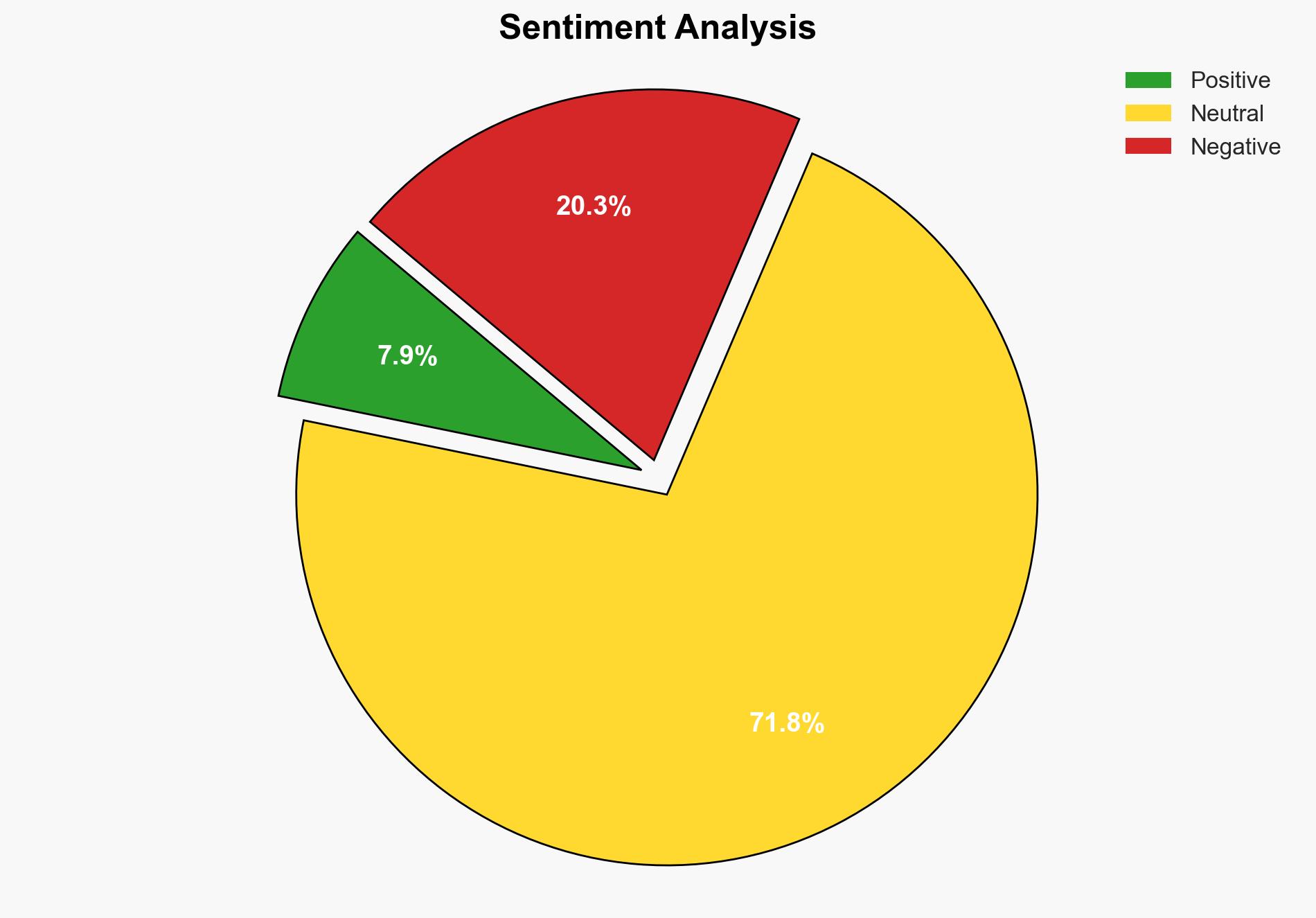China Iran Russia hold joint naval drills in Middle East – VOA News
Published on: 2025-03-12
Intelligence Report: China Iran Russia hold joint naval drills in Middle East – VOA News
1. BLUF (Bottom Line Up Front)
China, Iran, and Russia have conducted joint naval drills in the Middle East, focusing on the strategic Strait of Hormuz. This exercise, named “Maritime Security Belt,” highlights the growing military cooperation between these nations amid regional tensions. The drills come at a time of increased geopolitical instability, with Iran’s nuclear ambitions and regional conflicts posing significant threats. Stakeholders should monitor the situation closely, as these developments could impact global energy supplies and security dynamics.
2. Detailed Analysis
The following structured analytic techniques have been applied for this analysis:
General Analysis
The joint naval drills by China, Iran, and Russia are a demonstration of military strength and strategic alignment in the Middle East. The choice of location, near the Strait of Hormuz, underscores the importance of this waterway for global oil transportation. The involvement of advanced naval vessels from these countries indicates a significant commitment to enhancing maritime security and projecting power in the region. The drills are likely a response to perceived threats from Western nations and serve as a deterrent against potential military actions.
3. Implications and Strategic Risks
The joint naval exercises pose several strategic risks:
- Increased military presence in the Strait of Hormuz could lead to accidental confrontations, escalating regional tensions.
- The drills may embolden Iran’s regional allies, such as the Houthis in Yemen, potentially leading to renewed attacks on commercial shipping.
- GPS interference reported during the drills could disrupt navigation and affect global shipping routes.
- Iran’s continued nuclear advancements and military cooperation with China and Russia may provoke a stronger response from Israel and Western nations.
4. Recommendations and Outlook
Recommendations:
- Enhance surveillance and intelligence-sharing among allied nations to monitor naval activities in the region.
- Engage in diplomatic efforts to de-escalate tensions and encourage dialogue between involved parties.
- Invest in technological solutions to counter GPS interference and ensure safe navigation through critical waterways.
Outlook:
Best-case scenario: Diplomatic efforts lead to a reduction in military activities, stabilizing the region and ensuring the security of global energy supplies.
Worst-case scenario: Escalation of military confrontations, leading to disruptions in oil transportation and broader regional conflict.
Most likely scenario: Continued military posturing by China, Iran, and Russia, with periodic tensions but no major conflict in the short term.
5. Key Individuals and Entities
The report mentions significant individuals and organizations involved in the regional dynamics:
- Shaun Robertson
- Ali Khamenei
- Abdul Malik al Houthi
Entities involved include the Russian Federation, China, and Iran, along with regional observers such as Azerbaijan, Iraq, Kazakhstan, Oman, Pakistan, Qatar, South Africa, Sri Lanka, and the United Arab Emirates.





